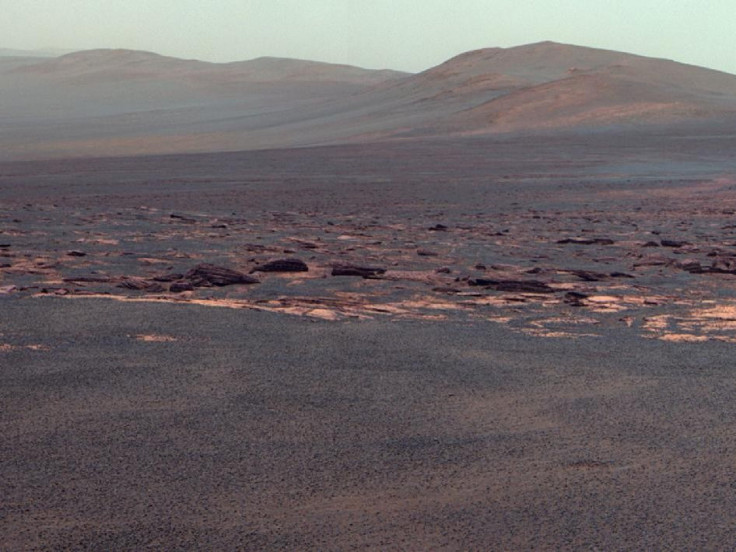See Mars Rover's 3-Minute Video of a 3-Year Journey (VIDEO)

It took three years for NASA's Opportunity Rover to travel from Victoria Crater to the Endeavour Crater on Mars. NASA's Mars Rover crossed 13 miles of Martian plains, at a glacial pace between September 2008 and August 2011.
During its three-year journey, the Rover team took an end-of-drive image on each Martian day that it moved. The result - a three-minute movie, which contains 309 images taken along the way.
Now you can watch the three-year journey from one crater to the other.
NASA's Jet Propulsion Laboratory said the trip included many detours because of the type of terrain the Opportunity encountered along the way.
The rover team also produced a soundtrack for the video by using data from Opportunity's accelerometers. The low-frequency data has been sped up 1,000 times in order to yield audible frequencies.
The sound represents the vibrations of the rover while moving on the surface of Mars. When the sound is louder, the rover was moving on bedrock. When the sound is softer, the rover was moving on sand. said Paolo Bellutta, a rover planner at NASA's Jet Propulsion Laboratory in Pasadena, Calif.
NASA launched two three-month long missions, Opportunity and Spirit Rover, for its Mars surface exploration mission. Both completed three-month prime missions on Mars in April 2004 but they continued for years of bonus, extended missions.
Opportunity and Spirit have made important discoveries about past wet environments on Mars that may have been favorable for supporting microbial life. Spirit stopped communicating in 2010 after it got stuck in the soil. Opportunity, however, continues its work at Endeavour and could keep going for years to come.
MUST READ: Yeti Exists for Sure in Siberia, Experts Claim: Top 10 Cryptids in the World (PHOTOS)
© Copyright IBTimes 2025. All rights reserved.





















